Opinion: Ventura needs to become more walkable
Sophomore Makena Large said, “I believe that Ventura is a walkable city. I walk around Ventura often, and who knows, maybe that’s a part of why I’m so comfortable here.” Photo by: Alejandro Hernandez
February 8, 2022
Ventura can be difficult to get around without a car and that needs to change
Walkability is an important aspect of city planning. But what is city planning? As defined by Merriam-Webster, city planning is, “the drawing up of an organized arrangement (as of streets, parks, and business and residential areas) of a city.”
There are several enemies of walkability in Ventura. The 101 freeway (also known as the Ventura freeway) cuts through Ventura and separates much of the city from the coast.
This inconveniences a pedestrian who is trying to walk from, for example, Ventura High School to Marina Park. The obvious route would be walking via Seaward Avenue, but the route is dangerous in part due to the high speeds of oncoming traffic. It is also a downhill road and the sidewalk is narrow (neither of which is good in terms of pedestrian safety).
Sophomore Evan Brehm said, “It’s not necessarily safe to walk on Seaward. It’s manageable if you need to but preferably not. I personally try to avoid walking there if I can.”
There are other areas in the city that are not walkable, and not all of these problems stem from the 101 freeway either. Many of the issues with walkability come from “stroads.” Stroads are a combination of street and road, leaving stroads to be effective as neither. A street in this context is defined as a narrow way with low traffic volume and slow speed limits, ideal for pedestrians. Roads are meant to be high traffic, high-speed thoroughfares that are free of pedestrians. More information can be learned about stroads from the YouTube video: “The Ugly, Dangerous, and Inefficient Stroads found all over the US & Canada.”
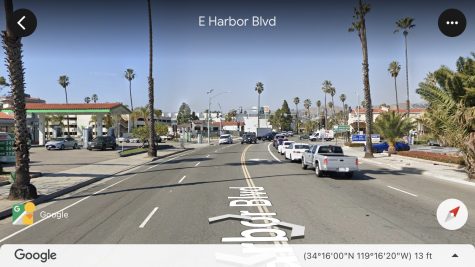
An example of a stroad in Ventura is that of East Harbor Boulevard, just over a mile (one and a half kilometers) from the VHS campus. It is wide, with a relatively high traffic volume with entrances and exits to the 101 freeway (not a safe place for pedestrians). If a VHS student wanted to walk to the McDonald’s on East Harbor Boulevard from VHS, they would have to walk on the aforementioned Seaward Avenue, and then if they managed to not get hit by a car they would finally cross the stroad onto the other side of East Harbor Boulevard.
There is an outstanding exception to Ventura’s poor city planning. That is the area of Downtown Ventura. In an effort to save small businesses with indoor dining restrictions, parts of Main Street allowed for outdoor dining on the street. This denies access to auto traffic and allows for a safer pedestrian experience, while also being more welcoming. It is still closed to auto traffic as of Jan. 31. According to a Ventura County Star survey, 85 percent of respondents reported being extremely satisfied with the decision to close parts of Downtown Ventura to car traffic.
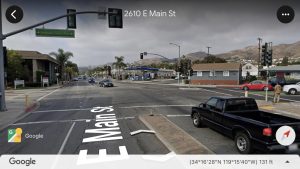
Junior Miles Becker said, “Old Town Ventura is very walkable with lots of pedestrian-friendly streets and areas but after the mall and midtown it becomes very car-dependent and walking in that area you can see it was made around cars.”
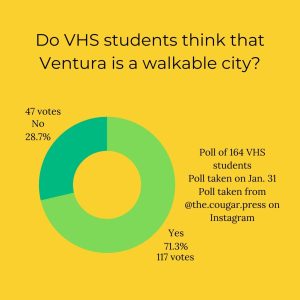
The city of Ventura should learn from downtown and realize just how popular the move to a pedestrian-focused city really is. Not all of Ventura can be like downtown, as Ventura is not as densely populated as a major American urban center, but the importance of walkability can still be understood. It is important for future city planning to move away from stroads, and to convert existing stroads into either complete streets or roads. This way, Ventura can become an example of what needs to happen in terms of national city planning.



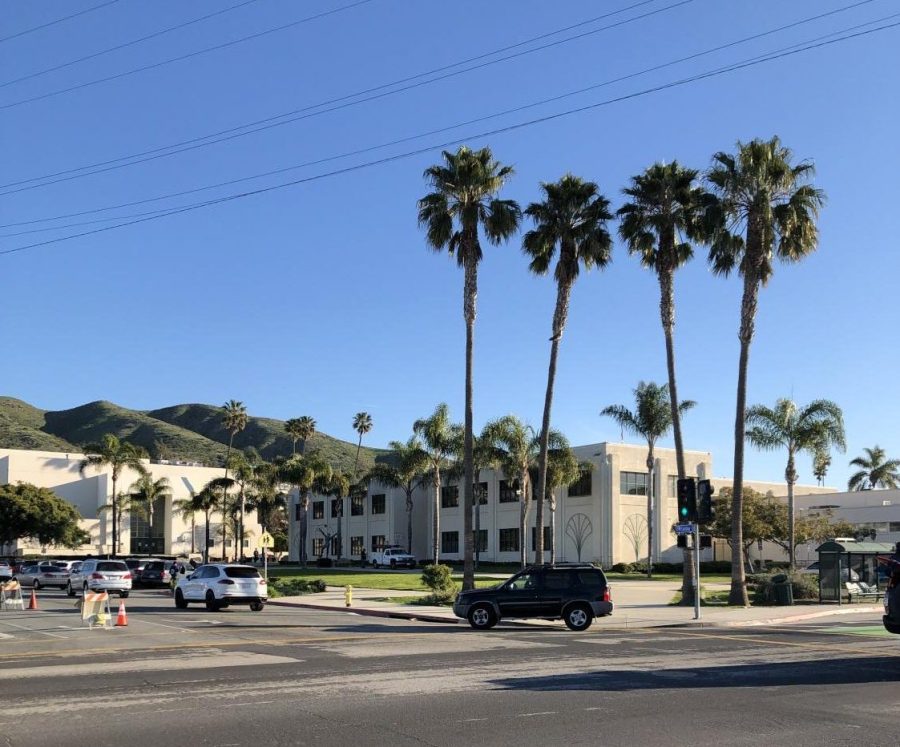

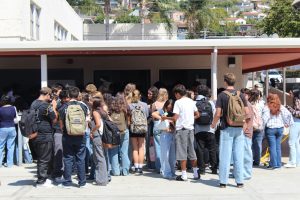

![Lindsay Guzik, new assistant principal said, "I am settling in [at VHS] pretty well. I know a lot of the students, so that makes it a little bit easier coming from Cabrillo, and it's been nice to see them all grown up." Photo by: Abraham Kassa](https://thecougarpress.org/wp-content/uploads/2025/09/IMG_9728-300x200.jpg)
